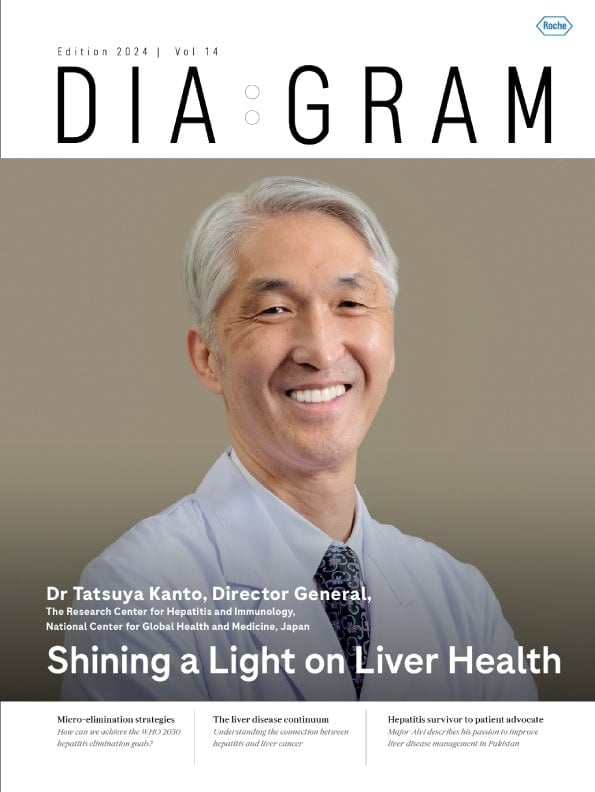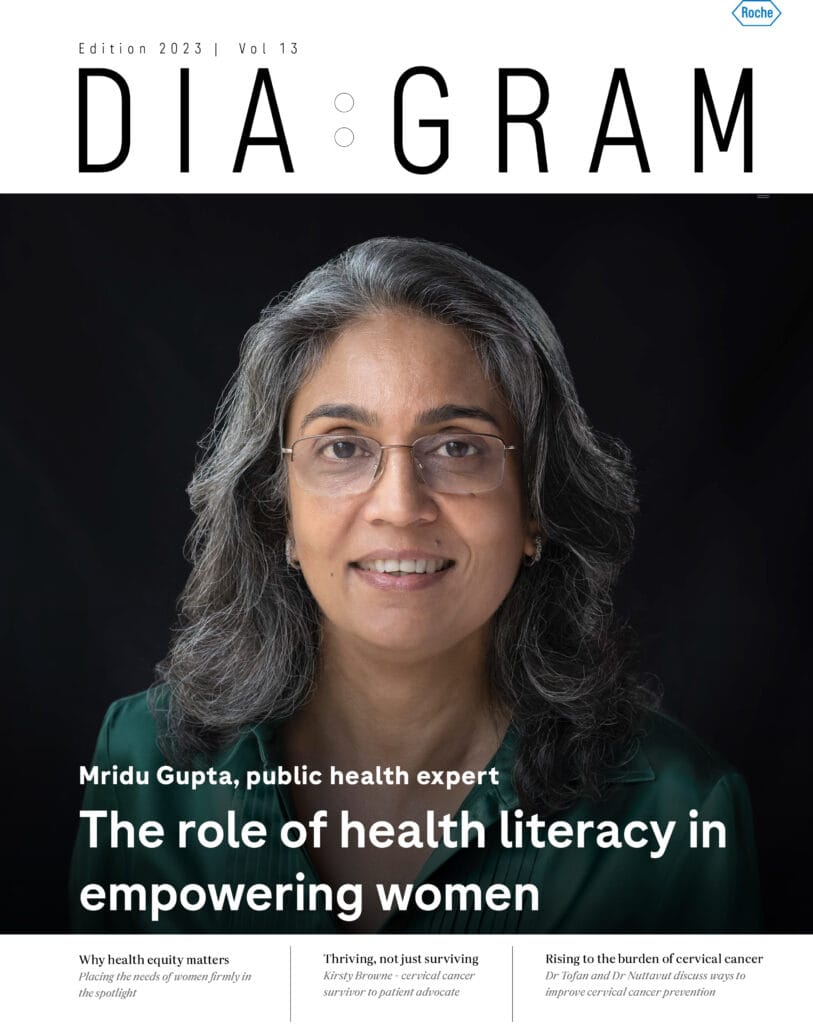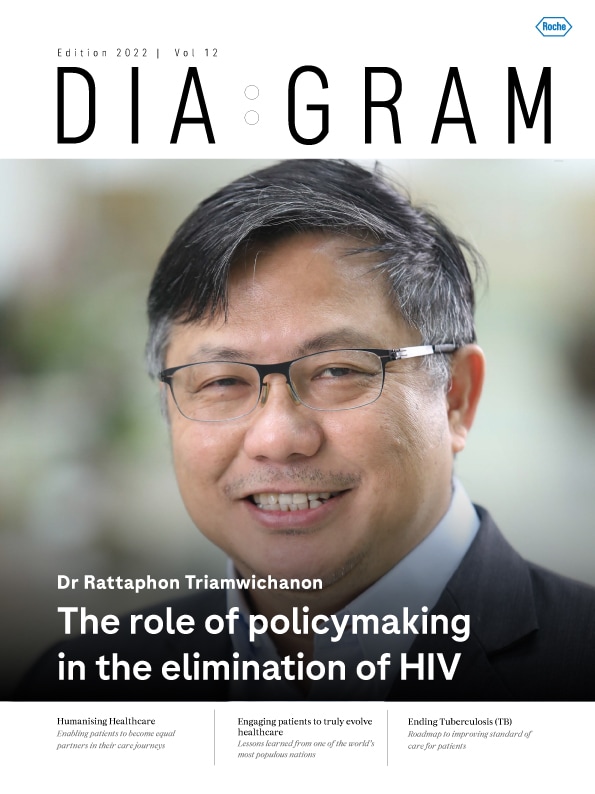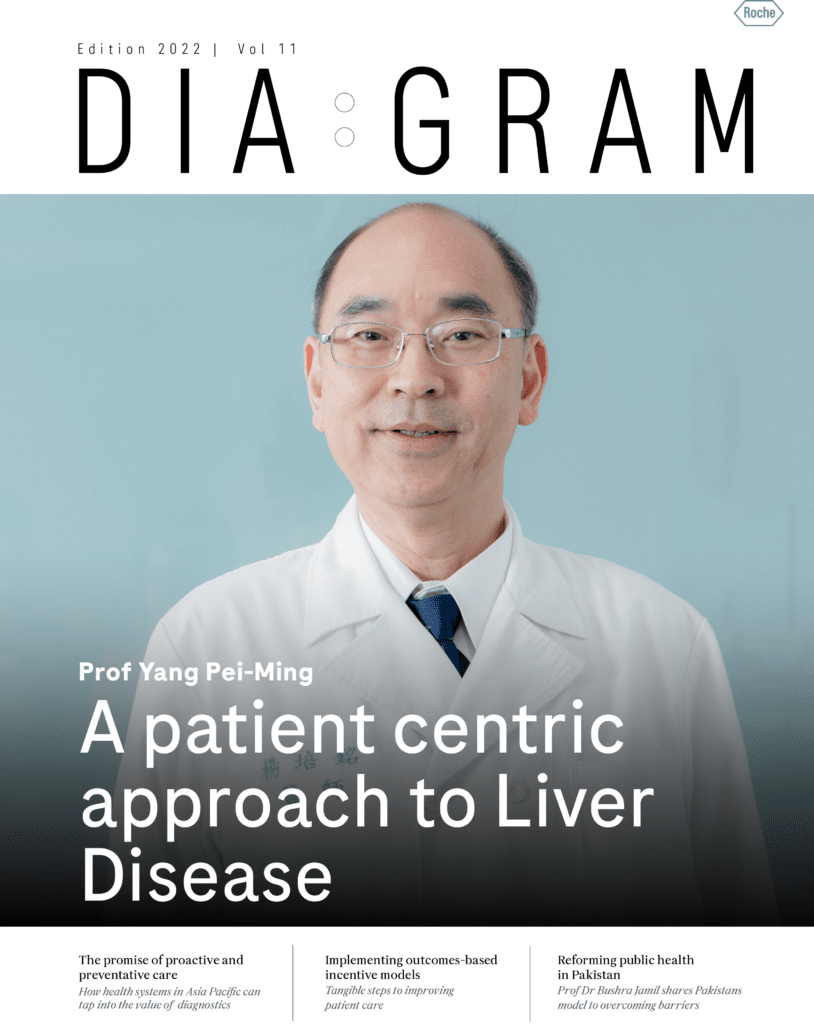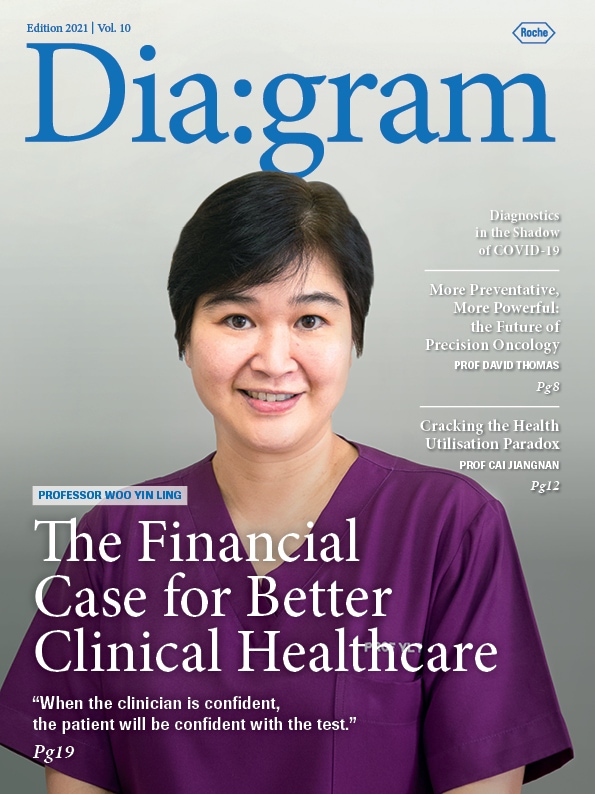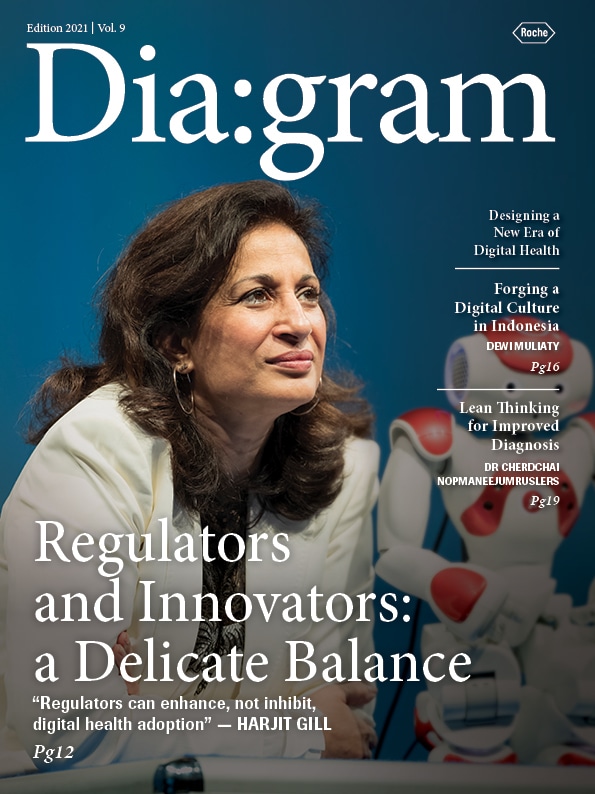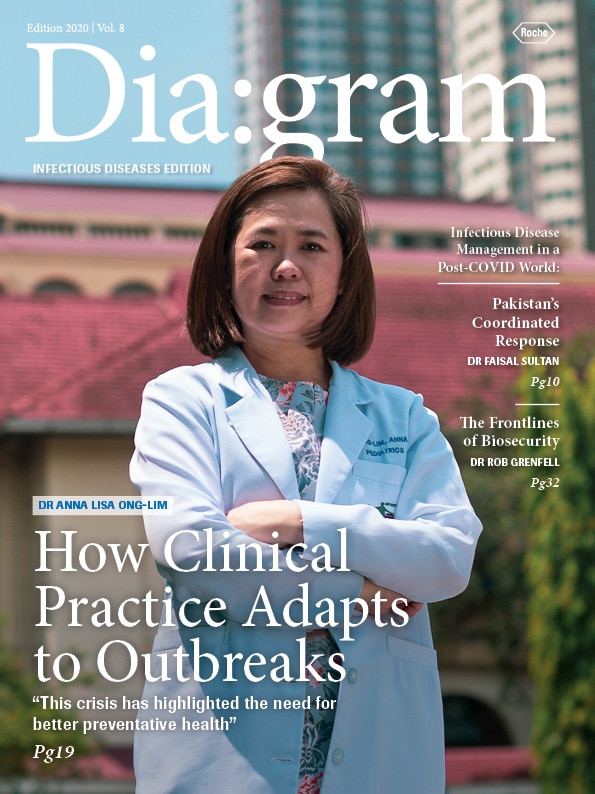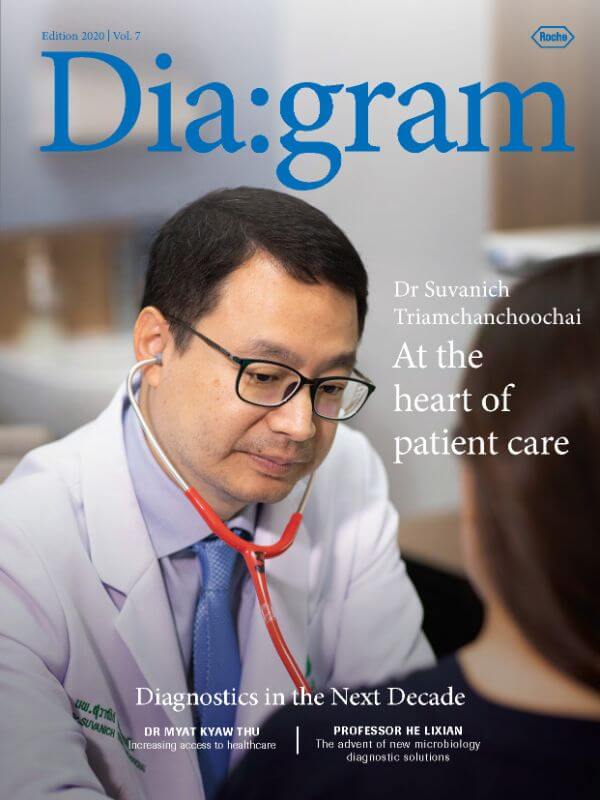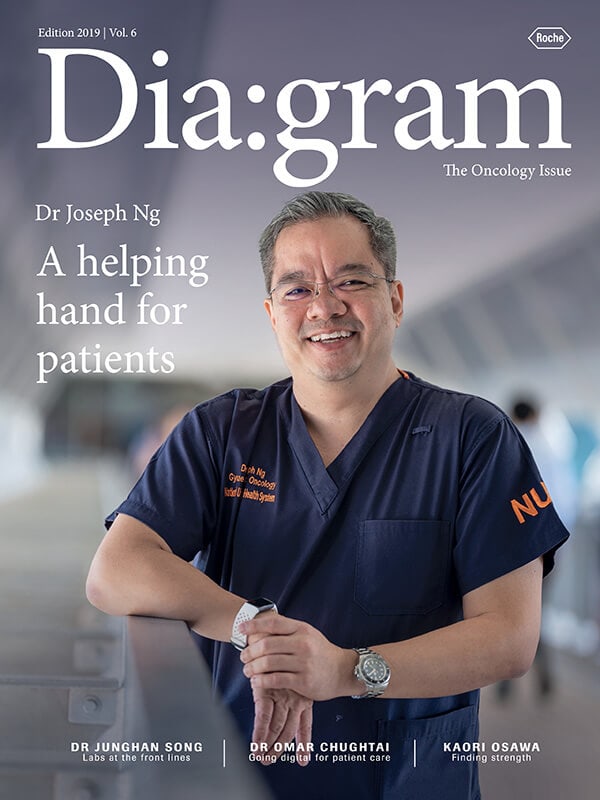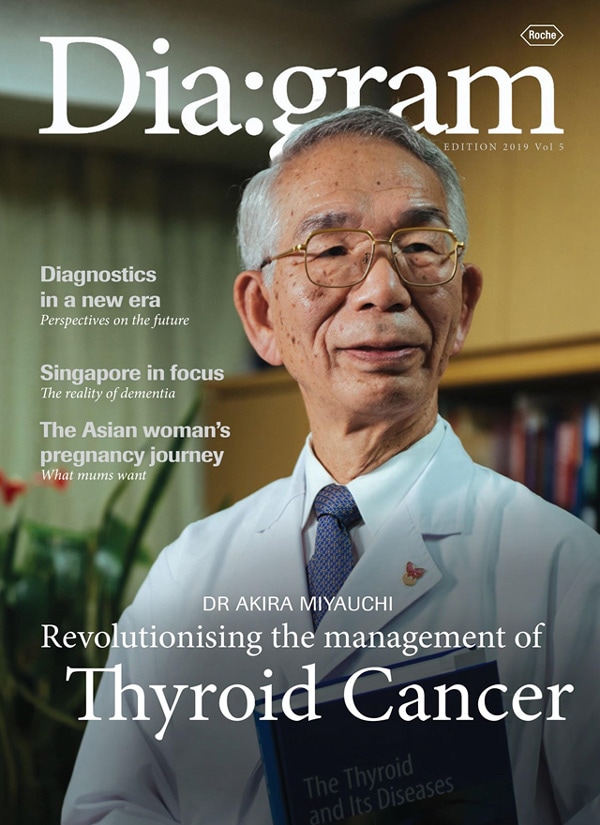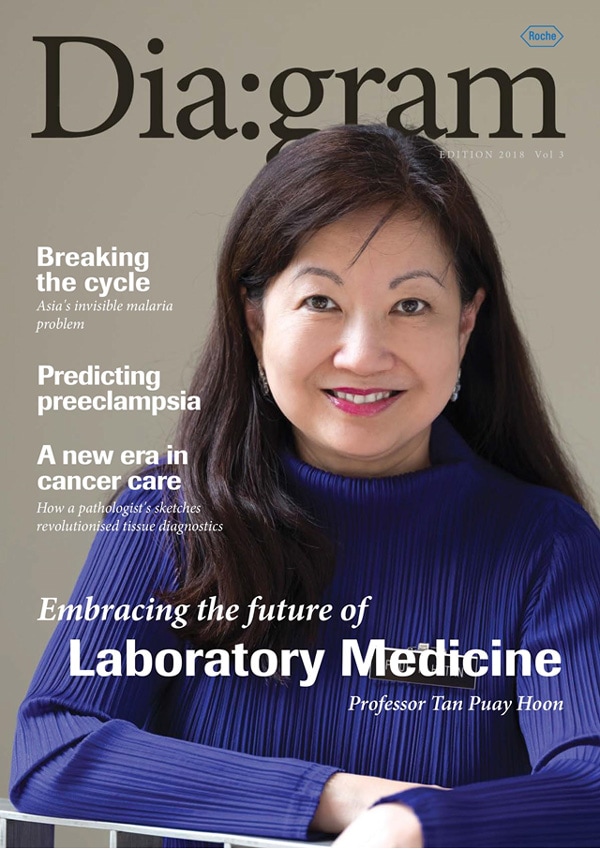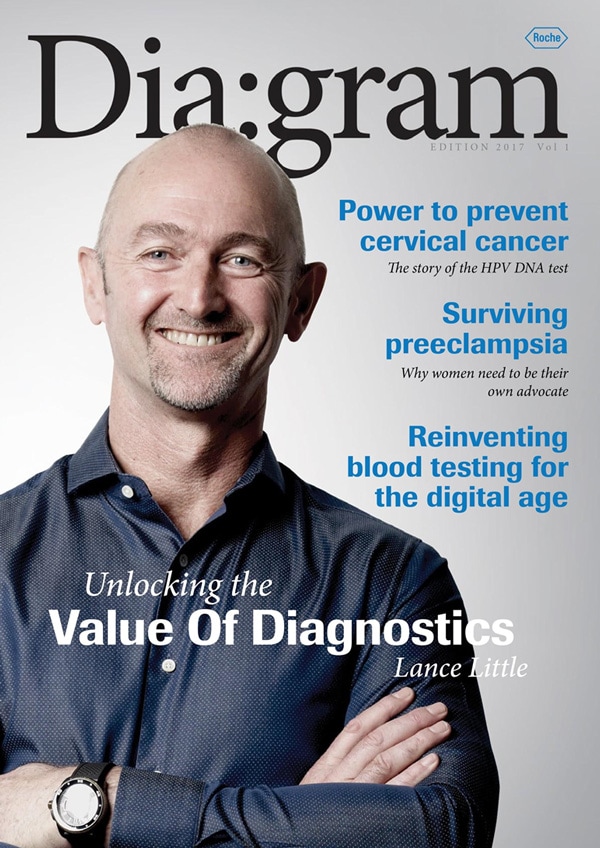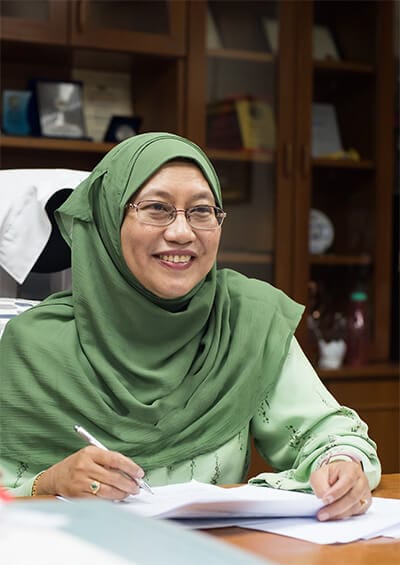
Dr Arni Talib is the Head of the National Pathology Services in Malaysia and the Head of the Department of Pathology at Kuala Lumpur Hospital. Her laboratory serves as the National Referral Centre for the Ministry of Health (MOH) which provides diagnostics services to the whole country. In this interview with Roche Diagram magazine, Dr Talib talks about her vision for the pathology industry in Malaysia.
1. How did you get into the field of pathology?
When I started my housemanship, I was not quite sure which specialty to focus on. I was fortunate to have good mentors, and one of them suggested that I consider pathology. I knew very little about pathology back then, so I decided to find out more. What I discovered really piqued my interest.
I am someone who likes to constantly learn and be exposed to new information and knowledge. I find pathology naturally fits with this interest because it gives you the satisfaction of understanding the basis of certain diseases. It unravels many mysteries by putting the pieces of a puzzle together.
Pathology also gives you the opportunity to interact with different people because it requires collaboration among different teams. My plan originally was to specialise in paediatrics, which did not work out, but now I am lucky to find myself at a juncture where I can put both my interests together. A few years after qualifying as an Anatomical Pathologist, I pursued a fellowship training in Paediatric Pathology in the United Kingdom. Since then, I have further developed my interest in Paediatric Pathology.
2. What has surprised you the most about the industry?
I found that many people, including those in the clinical field, are unaware of the role of pathology. The perception is that pathology is just a place where you send patients’ specimen for testing to get the results. They don’t see what is happening behind the scenes, how vital it is for the specimen to be sampled well and the number of critical processing steps that occur in order to get a good test result.
Laboratories are seen as a ‘support’ service, when in reality we are so much more than that. Pathologists are on par with clinicians and in many ways, we are the doctors’ doctor.
3. Who should advocate the role of pathology?
The responsibility lies with us, the pathologists. There’s a famous saying “If you want something done, do it yourself”, and I firmly believe in this. We play a big part in elevating the role of pathology.
I always tell my team that they need to interact with the clinicians and communicate with them. If their specimens are not up to standard, tell them. Meaningful results can only be obtained from an acceptable sample. The onus is on the pathologists to interact with our clinical colleagues, especially the younger doctors, on the right pre-analytical sampling of the specimen.
The key word is communication. When we communicate and interact well with each other, it is easier to get better cooperation. There is a lot more to do and we have to keep on this path and continue to champion the significance of pathology.
4. Are you happy with the pace of change in the industry?
Slowly but surely, the perception towards pathology has been changing. In comparison to two to three decades ago, pathology is held in much higher regard now. I do think we need to pick up the pace further because there are still many things to accomplish. This includes ensuring that our pathologists are equipped with the right skills and training to be able to keep up with the technological evolution taking place in the industry. And in today’s value-based environment, we have to do a good job of demonstrating the value of pathology at every level of care.
The main factor that will help spur these changes is cultivating advocates within the industry. This will ensure that we have strong support and buy-in to develop the industry further.
5. The Department of Pathology has developed over the years into a modern multi-disciplinary centre providing state-of-the-art healthcare diagnostics, consulting and laboratory services in Malaysia. Can you talk about its evolution?
We have come a long way since being established in the 1960s. Before this, pathology was only available at the Institute for Medical Research (IMR). The gradual transfer of services to the hospital commenced from clinical and biochemistry laboratories which back then were manually equipped and run by a rather lean team.
Slowly, the range of services and the skills within the department expanded to other fields of pathology such as microbiology and histopathology followed by cytology and finally haematology and genetics.
Now, we are a 400-strong, almost fully-automated laboratory that provides the full range and scope of services. Our staff consist of pathologists in the various disciplines of pathology, medical officers, scientific officers, medical laboratory technologists, as well as operational and clerical personnel. Our services continue to expand from routine clinical tests to specialised molecular tests such as thalassemia screening, haemato-oncology, solid tumours and infectious disease. Testament to the expansion of our services and skills is that our pathology laboratory currently receives around 14 million tests a year, and some specialised tests are referred from all over the country.
6. What are some of the projects you are working on?
We are working on some very exciting projects. Most notably, we are in the midst of reviewing the scope of pathology services that are offered across the whole country. We are also working on a system to standardise data collection nationwide. Going hand-in-hand with this is the development of a network among the testing centres through a shared Laboratory Information System (LIS).
Our pathologists and laboratory professionals are extensively involved in developing this LIS as we are going to be the ones to use it, and we want to ensure that it is useful and usable. The long-term sustainability of our industry requires a cost-efficient and quality-focused approach, so what we are also doing is taking a holistic view and reviewing different aspects of the pathology service such as resources, procurement and capital building among others. Finally, I am also focusing on quality management. It is my hope that by the time I retire, all the main laboratories in Malaysia will have received well-recognised laboratory accreditation.
7. What is your vision for the Department of Pathology and the pathology industry in Malaysia?
Malaysia, similar to other nations in Asia Pacific and globally, is facing a rise in the ageing population and chronic non-communicable diseases such as diabetes and cancer, as well as rapid and increased healthcare spending. By integrating pathology services at every point of the care spectrum, we can enable proactive and early intervention, as opposed to reactive intervention.
When this becomes a reality, pathology will prove to be a significant service for the MOH, not only in strengthening healthcare delivery, but also in helping to keep healthcare costs under control. Other than that, it is also my vision for the pathology specialty to become more seamless as well as comprehensive in its service delivery.
In terms of the industry, I strongly believe that the industry has a bright future, and is set to become the main function of the healthcare system. After all, pathology is already a key driver at every level of care – prevention, diagnostics, monitoring. We are now evolving towards personalised treatment.
8. Do you think the industry is well-equipped to train the future generation of pathologists?
Rapid change has become a defining feature of our industry, and it is no different for pathology. As a result, we need to continue to build up our skills and knowledge in the face of new developments. Training certainly forms a crucial part of this industry.
When the industry was still in its infancy, senior pathologists who received training abroad, would come back and hold in-house trainings for other junior trainees at their respective institutions. Then, local postgraduate programs started flourishing and the various disciplines offered training. This directly correlated with the increase of specialists in our laboratory. Since then, our education and training program has not only strengthened and expanded exponentially, but a uniform conjoint body was also formed to standardise the curriculum and examinations conducted by the local postgraduate trainings in pathology. The training not only includes the universities but has progressed to involve the Departments of Pathology in the MOH hospitals. Hence, many MOH laboratories in the larger hospitals provide both structured and informal training for their “open system” candidates who enjoy the benefits of training from both universities and public hospitals.
All in all, as diagnostic tools and technologies evolve so must the role of the pathologist. Take for instance digital pathology. It is gaining a lot more prominence today though it was practically non-existent 20-30 years ago. Such advancements mean that pathologists need to keep up in terms of both training and skills. By developing such capabilities, they can optimise their role in the healthcare delivery model today, and lead the transformation of pathology services well into the future.
9. What is the most exciting thing about your job?
That I can help people – help patients get the right diagnosis and help clinicians manage their patients effectively. I am happy that we are able to play an important role and are being recognised as a member and part of a multi-disciplinary team involved in the decision-making related to patients. I think recognition is important – having colleagues tell you that you have been helpful really gives you a boost and makes your day.
10. What’s next for you personally?
I want to ensure that I have put things into the right perspective so that when I retire, I hope that I have helped set the right path for young pathologists. When I retire, I hope to still keep in touch with the field of pathology by being a go-to resource and playing an advisory or educational role. Other than that, I want to read all the books that I have accumulated over the years. I love to read because reading allows you to learn, think and see things differently. I don’t have much time now to read more diverse and varied books though, except journals and articles related to my field of work. All the same, every time I walk into a bookshop, I always buy a book and pray that I still have good eyesight and good concentration power to indulge in reading when I retire!

